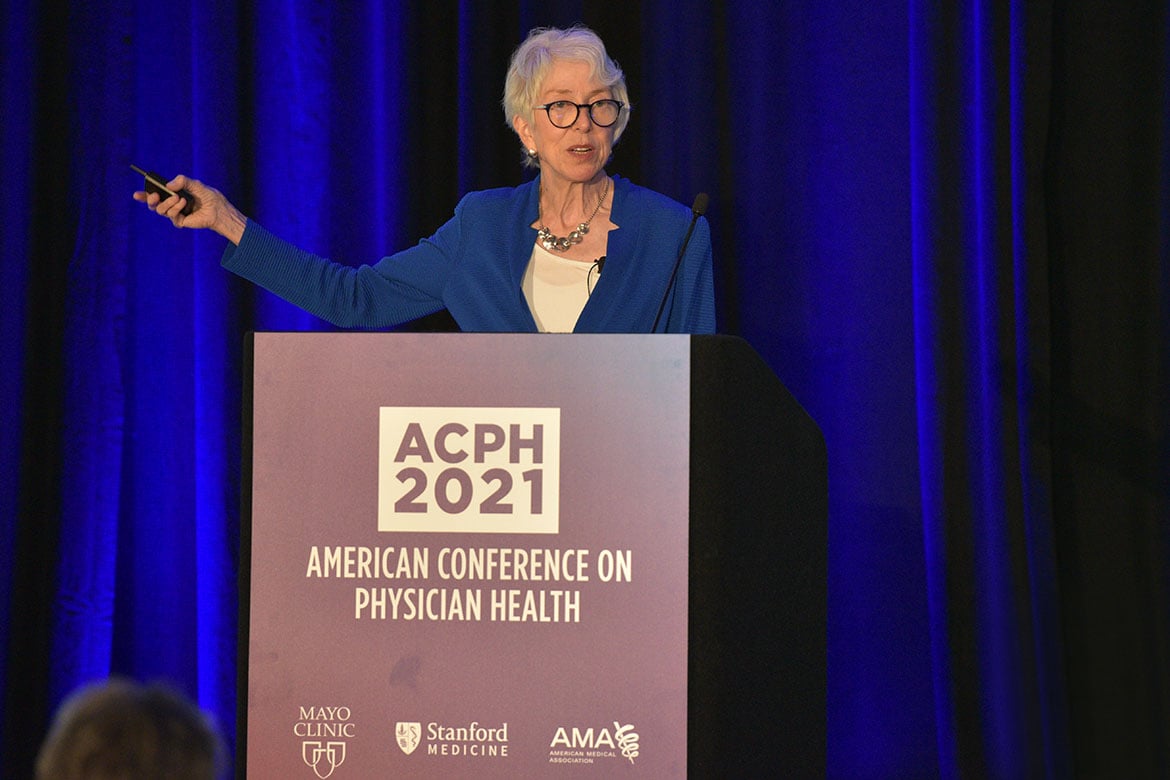Before the pandemic struck, the National Academy of Medicine published a report that identified six big things that must change to beat physician burnout. With COVID-19 came added stress and a worsening of the physician burnout epidemic.
“We have the attention of the nation now in a way that now it’s really top of mind for the public,” Christine Cassel, MD, a geriatrician, bioethicist and professor of medicine at the University of California, San Francisco School of Medicine, said during a plenary session at the most recent American Conference on Physician Health, which was held in Scottsdale, Arizona.
Dr. Cassel was a member of the committee that wrote the consensus study report, “Taking Action Against Clinician Burnout: A Systems Approach to Professional Well-Being,” published by the National Academy of Medicine (NAM). She is now working with the National Action Collaborative on Clinician Well-Being and Resilience. Christine Sinsky, MD, vice president of professional satisfaction at the AMA, is also part of the collaborative.
“We're paying attention to this really important issue,” which comes “at a time when the practice of medicine itself—for a whole bunch of other reasons—is changing,” said Dr. Cassel. “Part of my goal is to begin to get the regulatory organizations—who are aware of this issue—to come farther along.
“It's one thing to talk about making these changes at the national level, the federal level, but we actually are doing it. We have a plan,” she added.
Committed to making physician burnout a thing of the past, the AMA has studied, and is currently addressing issues causing and fueling physician burnout—including time constraints, technology and regulations—to better understand and reduce the challenges physicians face. By focusing on factors causing burnout at the system-level, the AMA assesses an organization’s well-being and offers guidance and targeted solutions to support physician well-being and satisfaction.
Convening a group of leaders
An important way to elevate well-being is to get those in leadership together, Dr. Cassel said.
This includes convening leaders from the Centers for Medicare & Medicaid Services, “other payers and heads of delivery systems—either CEOs or perhaps CIOs—to talk seriously about documentation and documentation pressures,” said Dr. Cassel. “One thing to look at the changes that were made into the E/M codes just at the beginning of this year and to ask: Did that make any difference? Did that have any impact?
“And then where can we go from there? Not just stopping there,” she added.
Discover why the surgeon general feels we must act together to address physician burnout.
Changing accreditation
The next focus is “related to accreditation—what could the accrediting bodies do to help stimulate organizations to pay more attention, to do more for clinician well-being?” said Dr. Cassel. “For example, for the Joint Commission, if clinician well-being were part of hospital and post-acute care accreditation, what would that look like?”
“You want to do it without adding more measurement burden—you want to think creatively and differently about it,” she said. “The Joint Commission is actively engaged in conversations with us.
“But it’s not just the delivery system, it’s also the payer,” Dr. Cassel said. “We want to bring in the National Committee for Quality Assurance and other accrediting organizations to think about all of the things that they put on their dashboard for whether or not you get accredited. Where is clinician well-being in that dashboard?”
Working with health technology
“The last one is convening health information technology entrepreneurs and innovators about how we can take advantage of the tremendous power of electronic digital science,” said Dr. Cassel, noting that this “has come to be seen for many physicians as an enemy—as a problem rather than as a problem solver.”
But “the tools are enormous when you think about it, not just voice recognition, but ways that that information can be taken from the EHR and digested and turned into more clinically useful information,” she said.




